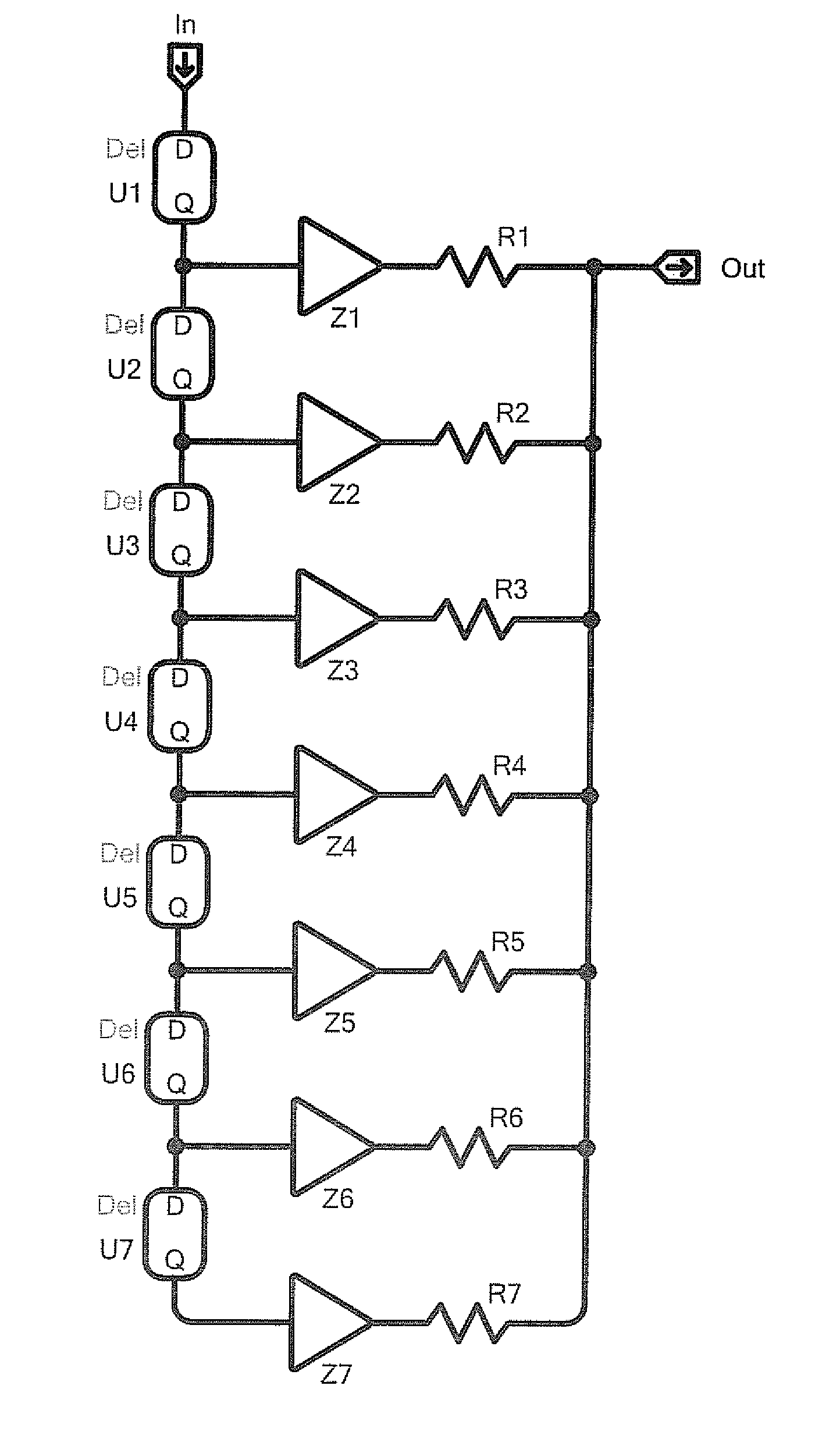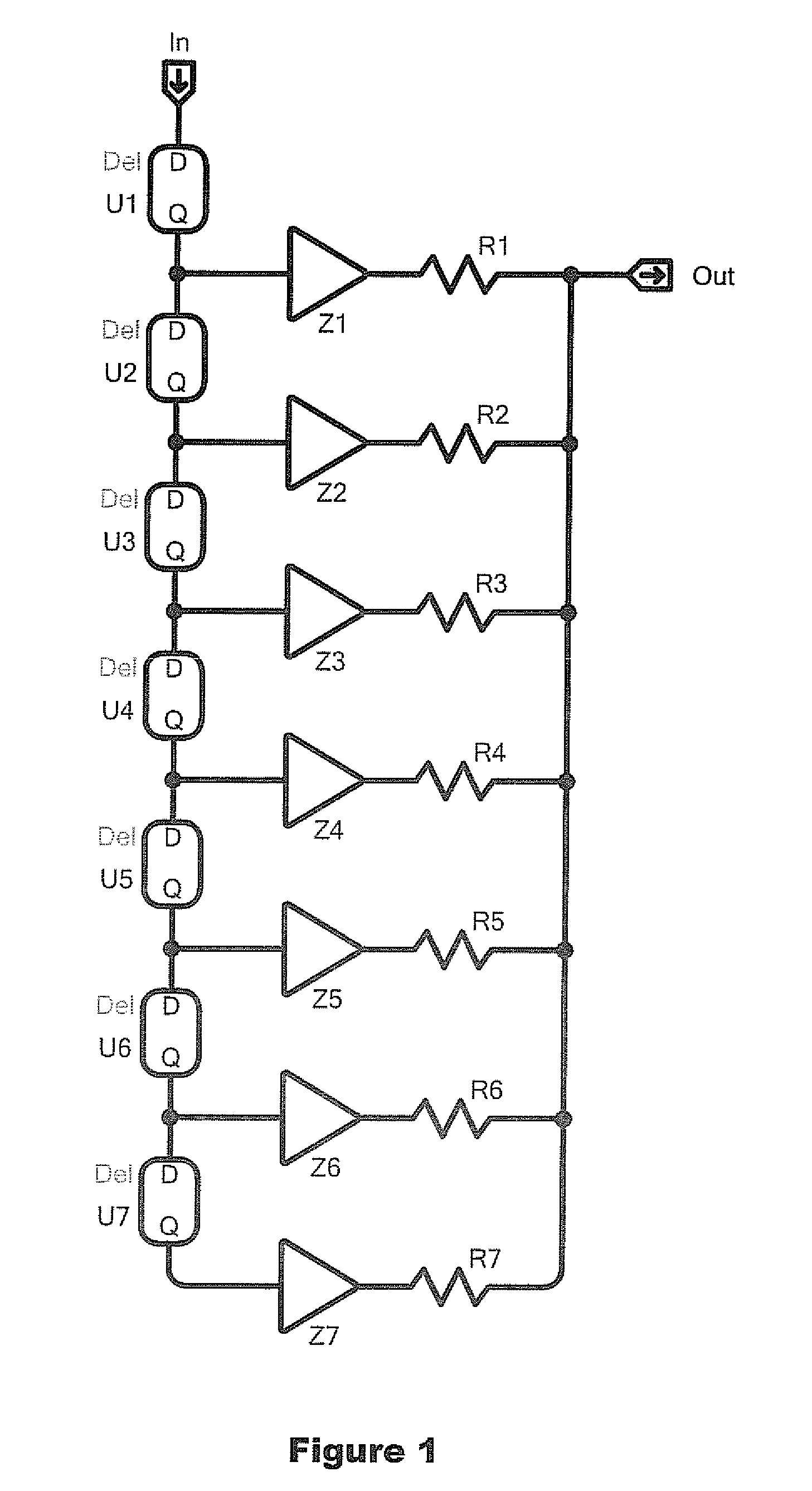FIR filter using unclocked delay elements
a delay element and filter technology, applied in the field of electronic filters, can solve the problems of complex and costly, well-defined and steep transition bands of analog filters, and the range of frequencies
- Summary
- Abstract
- Description
- Claims
- Application Information
AI Technical Summary
Benefits of technology
Problems solved by technology
Method used
Image
Examples
Embodiment Construction
[0031]The present application describes a finite impulse response (FIR) filter using unclocked delay elements, rather than clocked analog delay elements. Like a conventional FIR filter, such a filter accepts an analog signal and produces an analog signal, but provides a simpler way of filtering certain analog signals than conventional filters.
[0032]The delay elements of a filter according to the present application are unclocked, such as logic gates which have a propagation delay but do not require or use clocking, rather than clocked delay elements such as DFFs or other clocked elements that are used in conventional FIR filters. The propagation of the input signal is thus due only to the delay inherent in each gate, and occurs based upon when a signal reaches the gate rather than being caused, by a clock signal.
[0033]The logic gates do not act as sampling devices as in a conventional FIR filter, and thus the input analog signal must be converted, to a digital signal before it is ap...
PUM
 Login to View More
Login to View More Abstract
Description
Claims
Application Information
 Login to View More
Login to View More - R&D
- Intellectual Property
- Life Sciences
- Materials
- Tech Scout
- Unparalleled Data Quality
- Higher Quality Content
- 60% Fewer Hallucinations
Browse by: Latest US Patents, China's latest patents, Technical Efficacy Thesaurus, Application Domain, Technology Topic, Popular Technical Reports.
© 2025 PatSnap. All rights reserved.Legal|Privacy policy|Modern Slavery Act Transparency Statement|Sitemap|About US| Contact US: help@patsnap.com



